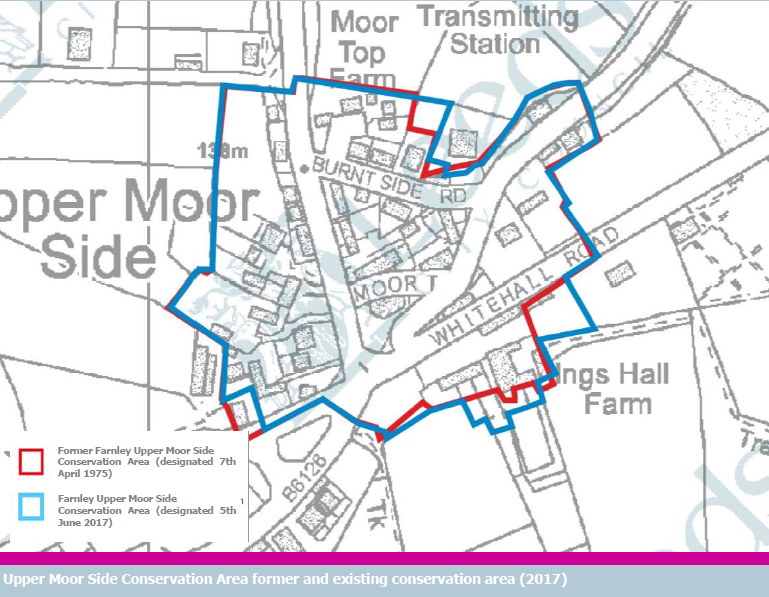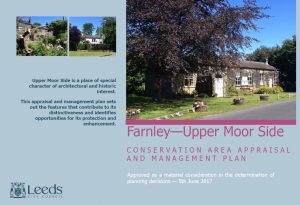An amended plan to protect a historic village area of Farnley from inappropriate development has been approved by Leeds City Council.
Farnley Upper Moor Side was first designated a conservation area in 1975. It helps to protect the village’s unique architecture and historical attractions from inappropriate demolition and development.
All conservation areas are reviewed periodically by the council and the latest revisions will ensure the council’s information is up to date.
The conservation area will remain largely unaltered, with one property being removed. See the image below for details

The 17-page review says any new development should be sympathetic in character to surrounding positive buildings and emphasises the open views to the countryside and the space between properties.
It also notes that traffic signals and barriers at the junction of Back Lane/Whitehall Road attract attention away from the rural village views and would benefit from consolidation and upgrading.
The Woodcock Inn, it says, has had ‘unsympathetic alterations that detract from its positive historic character’. A more sympathetic restoration would improve the property and the wider conservation area.
It also says the open car park outside the Woodcock and Moortop motors can dominate key views within the Conservation Area. It recommends sympathetic boundary treatments, such as coursed stone walling, would mitigate this impact.

Upper Moor Side dates back to medieval times. The village originated as an isolated agricultural community which developed into a more industrial location throughout the 18th and 19th centuries, eventually becoming the commuter location we see today.
The review can be read in full here.
A council officer’s report approving the plan says:
“Support was received from the local residents, local ward members and the local Farnley Vision group. There were no objections to the conservation area in principle …”
A public meeting attracted 25 people last October as part of a wider consultation into the review.
Buildings within a conservation area are protected from unauthorised demolition, and new developments have to meet higher standards of design than elsewhere.
The council report can be read here.
